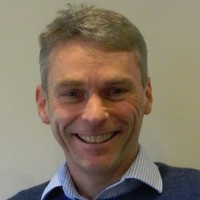
Dave Waters, Paetoro Consulting UK Ltd
There is something of the Tango about geothermal. A tease. A sense that anything could happen, and a sense of smoldering energy that is never quite tamed.
It is a challenge to stay on top of geothermal developments sometimes, and that is in-part not just because of new technologies, but because it is such an inherently huge and diverse topic. There is geothermal energy for heat, and geothermal for power. There are geothermal systems associated with volcanism and magma bodies. There is geothermal resource lurking in every subterranean geothermal sedimentary or fractured reservoir – many of them with complex internal convective flow systems driven by rainfall, relief, and permeability architecture that confuse the picture of simple heat flow from the mantle and crust. Then there are arguably simpler intra-continental basins where simpler heat flow does dominate, but even then the lateral variations in thermal conductivity from things like plutons and diapirs and carbonates can easily confuse the picture.
Heat is the thing we chase, and that is different from temperature. Everything that has a temperature above absolute zero carries heat, and that heat is a function not just of its temperature but how much of it there is – mass, and volume. And it’s no good having it down there if we can’t carry the heat to the surface. So, we need not only temperature but a large volume of water and permeability for it to move through. And we need to drill a hole that somehow links that heat, and usually that permeability too, to the surface. There are different ways that can be done, and doing the holes as efficiently and as cheaply as possible, and in a way that allows the heat to recharge – well that’s a fine art.
Geothermal though, is not just the challenge of finding that heat, temperature and permeability, it is the art of selling it - harnessing it commercially – and that is so much more challenging than just finding the resource. Because of its sheer diversity, geothermal has suffered a little bit. The scalability of it often isn’t realised because people get focussed on just one type of it and forget all the others. You can use it for greenhouses. You can use it to keep football fields free of frost. You can use it to dry fruit or timber. You can use it to give a town or a large building warm water. Pasteurizing milk. Yes, it can be used to make power too, but there is so much more. You don’t have to live under the shadow of a volcano to harness geothermal energy. Paris. Munich. Utrecht. Boise. New York. Zakopane. Are these places that shout geothermal to you? It’s used there to good effect.


Under the radar, quietly, unassumingly, geothermal is carving a place for itself in the energy transition – and it is these non-volcanic lower temperature sources that are actually so much more widespread and can provide heat in places it hasn’t even been thought of. They don’t have to be very hot for heat pumps to help. Those harvest the heat extracted from constantly replenishing volumes and concentrate it into places like our homes or shopping centres. Heating is typically nearly half of the primary energy requirement in temperate countries. Tackling that is a big way to help emissions reduction.
If you are involved in the subsurface, or you are involved in heat, then it is worth getting to know more about geothermal. It doesn’t have to be the whole solution to be a useful part of it. If you have intermittent wind or solar and you also have a geothermal resource, then you can get them working together. If you have the right resource, you can even use underground reservoirs as a heat bank, placing fluid down there to keep it warm until you need it. You might not need to drill very deep to access a useful resource – and if you are involved in an industry that drills holes anyway for other reasons – be it mining or oil and gas, then the more you know about geothermal, the more you can seize opportunities to save costs and reap additional revenue that might otherwise have been missed.
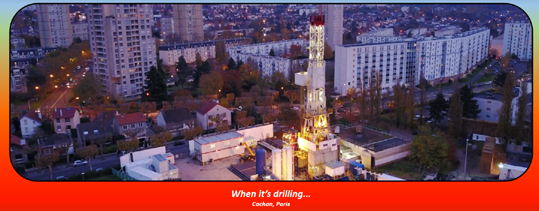
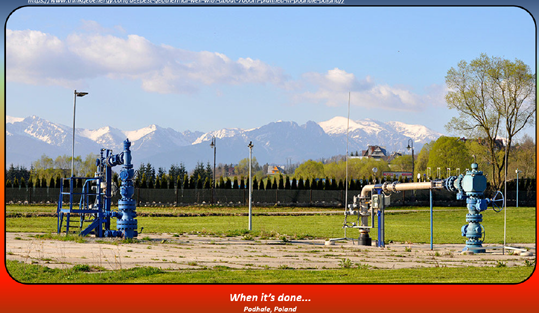
Energy companies of any kind do well to find out more about geothermal. The world is heading to a realm of holistic energy – crafting the most efficient and creative sources of energy so that they all make music together, and geothermal has a role to play.
So if you are a company like that, or an employee at one, it is worth your while to encourage participation in learning about geothermal. That’s why GeoLogica has put together a series of geothermal courses designed to give depth and breadth to organisations wanting to know if they should, and whether they could, take geothermal on. Courses designed to help geoscientists in a company’s team get up to speed on some of the details - the in-depth insights that make these projects work. Courses to help guide informed decisions, knowing the advantages of geothermal, and knowing the disadvantages, armed with insights from experts and case studies. Courses where you get the chance to engage with the tutor and other participants online and ask the questions you most want to ask.
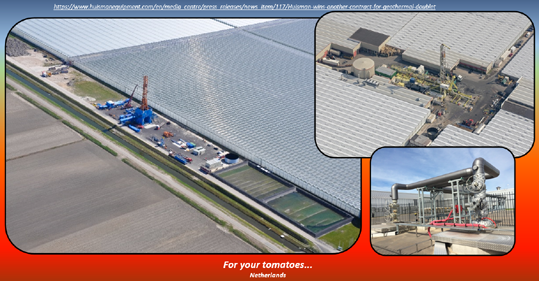
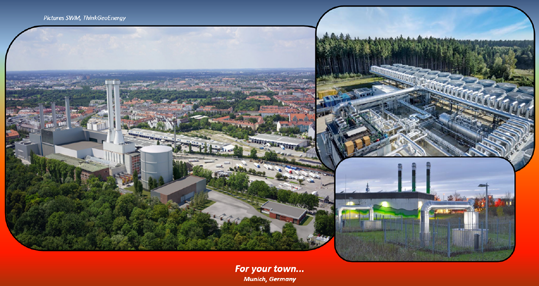
For those really not familiar with the basics, there is a starting point on our energy transition fundamentals course E501, which covers not just geothermal, but critical minerals and carbon capture too. Mark Ireland covers the geothermal side of things there. Then to distinguish between the higher and lower enthalpy (essentially higher and lower temperature) realms of geothermal, we have Mark Ireland tackling the latter, and David McNamara the former, in courses E506 and E507 respectively. Both Mark and David have long been active in the geothermal arena, and are proactive in other aspects of the energy transition too, so they know about how it fits in.
Mark has been particularly active in looking at the complexities in heat and fluid flow within the crust and sedimentary basins, and from his base at the University of Newcastle is leading many a charge on the energy transition front, including the Net Zero Geothermal Research for District Infrastructure (EPSRC) and Geothermal Resource Assessment with the NE Local Enterprise Partnership. David, based on the other side of the island at Liverpool University, has spent a lot of time in New Zealand looking at higher temperature geothermal there, and also many of the structural aspects of geothermal fields – he knows his geomechanics intimately, and that is such a vital part of geothermal to get to grips with. We want to know how fractures will behave.
If we have Mark and David talking to the differences posed by geothermal resources of differing temperature, and their respective applications, then we also have Jason Fisher talking more specifically to the differences between sedimentary, magmatic, and mantle geothermal systems. This talks to the very fundament of geothermal resource and how the heat gets to us and the rock medium by which it is conveyed to us, including the very different characteristics of the reservoirs that can retain the heat. If that grabs you, and it grabs me, then course E508 from Jason is for you.
But our Jason is a man of many talents and as well as working as a geothermal consultant with JRG Energy, he’s also worked in petroleum, copper-gold exploration, and hydrogeology. So he, like Mark and David knows not just about geothermal, but how it fits into a wider subsurface picture, sometimes to complement other resources. Jason is also well up on the operational aspects of geothermal, and it that vein he also talks to some of the environmental aspects of geothermal – should we worry about induced seismicity, subsidence, noise, or emissions when we do geothermal? Jason will walk you through this in course E509.
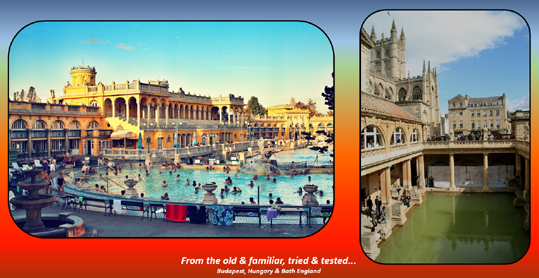

But all this lovely geothermal resource is of no use if we can’t access it, and the technologies to access geothermal resource are increasing day by day. There is the tried and tested geothermal doublet – a producer-injector pair. There are increasing efforts to maximise the efficiency of harvesting single wells for geothermal, especially as more and more oil and gas wells are looked at for geothermal conversion or co-production. There is the very vibrant discussion around open and closed loop geothermal systems – where wells involve the reservoir fluid directly, or don’t, focusing instead on conduction of its heat, respectively. Then there is the drive to go ever deeper and ever hotter into supercritical realms until we are almost tickling the very magma chambers themselves. Then at the other extreme, driving into old much cooler waters of flooded mines to harness heat from their waters.
The technologies involved in drilling to do these things is very much at the forefront of geothermal. The profit margins are not usually those of oil and gas (what is...), and the big-spend time is the well drilling – so its design needs to be right. Gioia Falcone is our star on this scene, with a course E514 on geothermal technologies and well design. Anyone who has been in the geothermal arena for any length of time will know Gioia and her extensive work across the energy engineering field, based from the University of Glasgow. Gioia has long been active in petroleum engineering as well as holding positions in geothermal well engineering, so if the differences between oil and gas and geothermal are what you want to know, and how geothermal drilling is stretching the boundaries of what is possible ever further, then Gioia’s course is the one for you.
The other thing that’s notably different from oil and gas in geothermal is resource estimation. How do we quantify how much of a resource we have – we don’t have a hydrocarbon contact to deal with here. Gioia will take you through that too, in course E515, covering geothermal resource classification. It’s something Gioia has been very proactive with, in helping to define global standards for such things.
Yet the difficulty in geothermal is sometimes taking all these things through the various stages, to fruition with a customer. In geothermal it is necessarily customer driven exploration, because we don’t have the luxury of shipping our hot water into a tanker and exporting it to the other side of the world. You can have the loveliest geothermal resource in the world, but if no-one is situated nearby wanting to use the heat or power – and a lot of geothermal resource is in that category, then well, it stays where it is. Similarly, the details of regulations and planning permissions. Who owns the resource? The mechanics of project delivery from start to finish, that’s often a crunch in geothermal. We have a tutor well-seasoned in the field lined up to tackle that aspect with another course coming shortly – watch this space as GeoLogica dots the i's and crosses the t's on that one. It will be course E529.
So far we’ve talked about our rocks as a source for heat. How about as source for cool? Rather than take heat out of the rock, how about we put it back? Have I gone mad? Hardly. Energy storage is all the rage these days, and an increasingly applied technology in many parts of the world is subterranean thermal energy storage in aquifers and reservoirs. This takes place most especially in temperate countries including Netherlands, Germany, and China. When the summer (or day) is hot, ground water is used as a repository for heat taken from warm buildings, and it is stored in part of a shallow aquifer. When winter (or night) is cold, the heat is used and the cold is stored in another part of a shallow aquifer. It’s using the ground like a thermal piggy bank, putting heat in when you don’t need it, raiding it when you do. This is greatly underutilised way of doing things and leading the charge for us on this is Matthew Jackson, based at Imperial College London. With a background in fluid mechanics, Matthew is in charge of doing this – ATES (aquifer thermal energy storage) - in anger in a UK project. If you want to be in the advance cohorts of this rapidly growing field, then Matthew’s course E519 is for you.
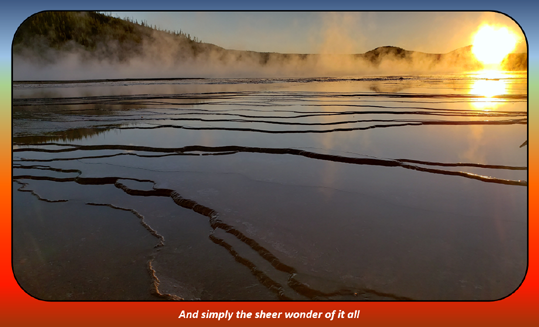
As well as these specifically geothermal courses, there are some more general geo-energy transition (GET) courses on offer that speak directly to important aspects of geothermal exploration. Alan Jones in his great breadth of experience in the subject takes us through an introduction to magnetotelluric exploration methods in course E517. These are not only hugely applicable to geothermal, but also highly relevant to critical mineral topics, amongst others. Richard Jones looks in more detail at the role of fractures and faults in all aspects of the GeoEnergy transition – since whatever you do in the subsurface, faults and fractures are never far from thought, and for GET purposes we address this in course E511, aided and abetted by a virtual outcrop tour.
Richard is another of our dynamic duo providers and in course E511 he addresses geospatial workflows for the energy transition. When your project’s success depends on a number of variables – commercial and geoscientific, that can all be mapped, it’s a no brainer to put theses maps together, amongst other clever ways of analysing them. Richard takes us through these and other workflows in course E510, comprehensively addressing aspects of geoinformatics for GET. It's complicated, and integrating and analysing complex and diverse data sets always needs all the help it can get.
If you have specific questions about how oil and gas workflows might be transferred into the geo-energy transition arena, then Mark Ireland and Alistair Donohew tackle that in E516, and last but not least, we can at long last (post-COVID) contemplate field trips again. We have a GeoEnergy Transition themed trip to Cornwall planned for later in the year in course E518. That may be fairly pre-subscribed already, but it would be the hope to run it again and perhaps other versions of it “up norf” in the medium term.
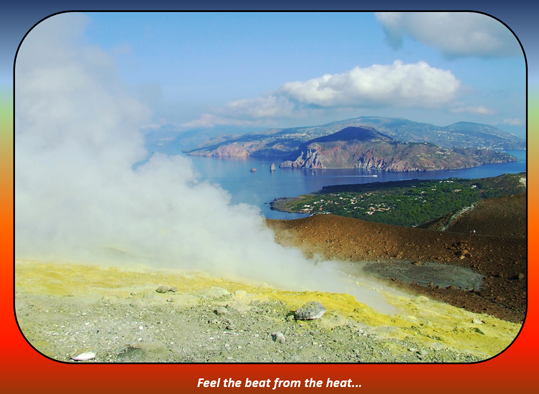
The geothermal adventure is yet to fully unfold. Actually it has been going on for many, many years at a level than is not widely realised. The appetite for renewable energies of this kind is only increasing, and the fact that geothermal is a steady non-intermittent baseload supply candidate, also makes it attractive. It has to compete with all the other alternatives out there, and will always carry some geological risk, and some drilling spend - so it is not for the unwary to plunge into without doing some homework. Yet as well as in some places being able to supply baseload power, it is able in so many more places to tackle one of the primary causes of emissions in the world today – combustion of fossil fuels for heat.
We have tried in the GeoLogica team to do a bit of homework ourselves, on the things we think would most help you and/or your company, to get up to speed on the subject. These courses can be a first step along that path. If you are serious about energy transitioning, and you are serious about the subsurface, it would be helpful to you to know more about geothermal. These courses are a resource to assist you.
So how about it? Take a look at the programme, see what courses take your fancy, and have a natter with a few mates from your team from other disciplines. Then club together a proposal for your line managers and higher, for a few virtually attended courses that can get your team primed quickly and cost efficiently on the GeoEnergy Transition - GET-ting going on the geothermal opportunity. And in the deal, if you want to check out critical minerals, carbon capture, groundwater, and geonuclear at the same time, you can. We don’t want to be cheeky about it, but they might just say yes. There is very little to lose, and a transition full of opportunity out there as we speak, just waiting to be harnessed by the intrepid. But beware, there are traps too, and it pays to hear what they are from the people who have been doing it for many years. Tango partners won't ever let you take them for granted - that footwork needs to be adept.
Let's feel the geomusic, and dance...
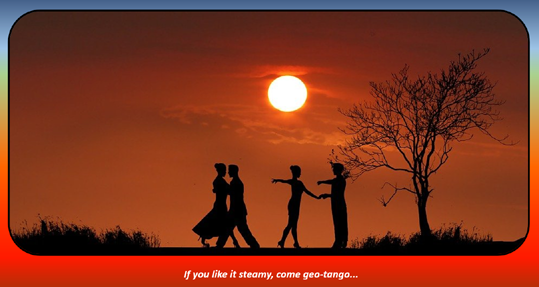
 KEYFACT Energy
KEYFACT Energy